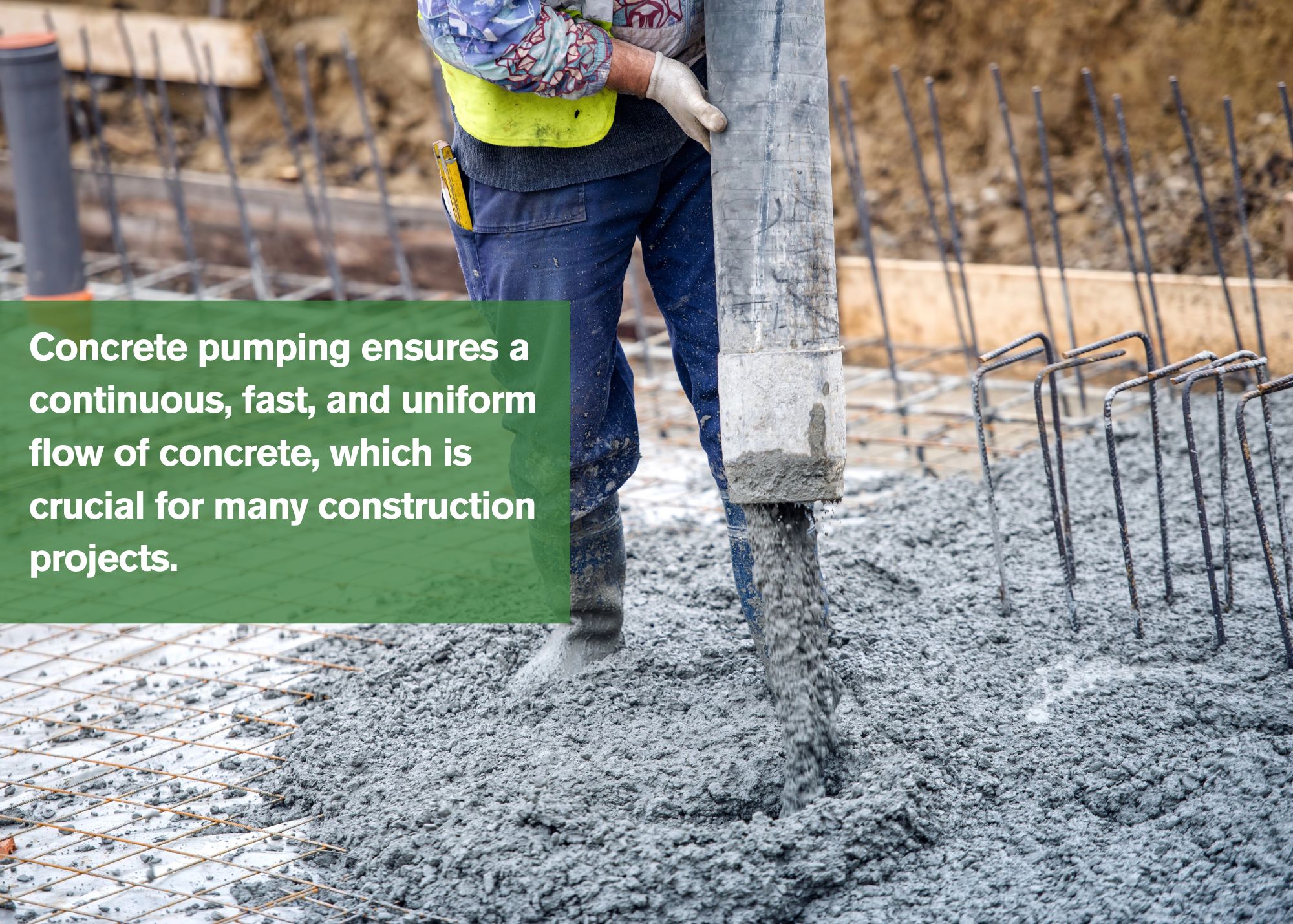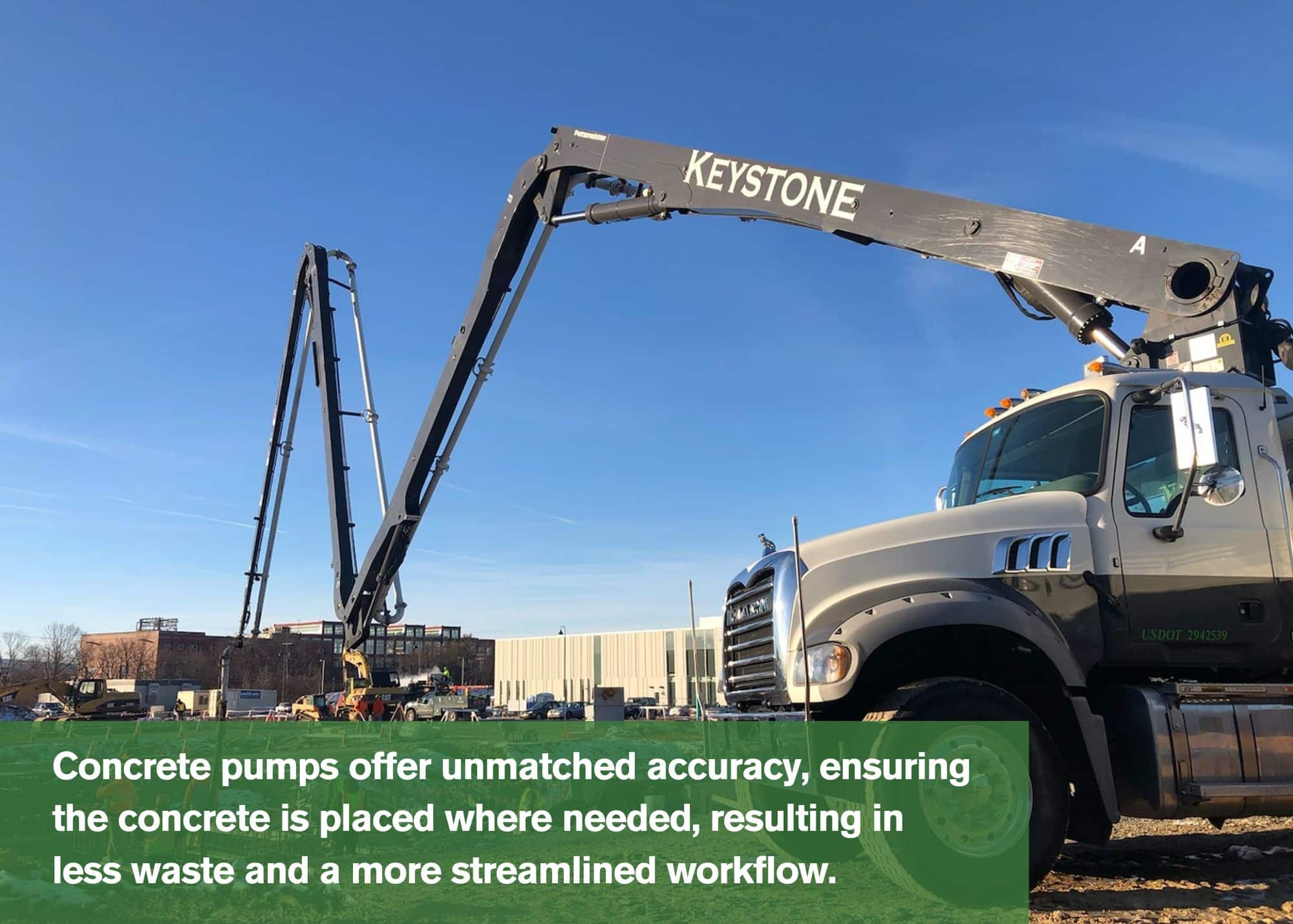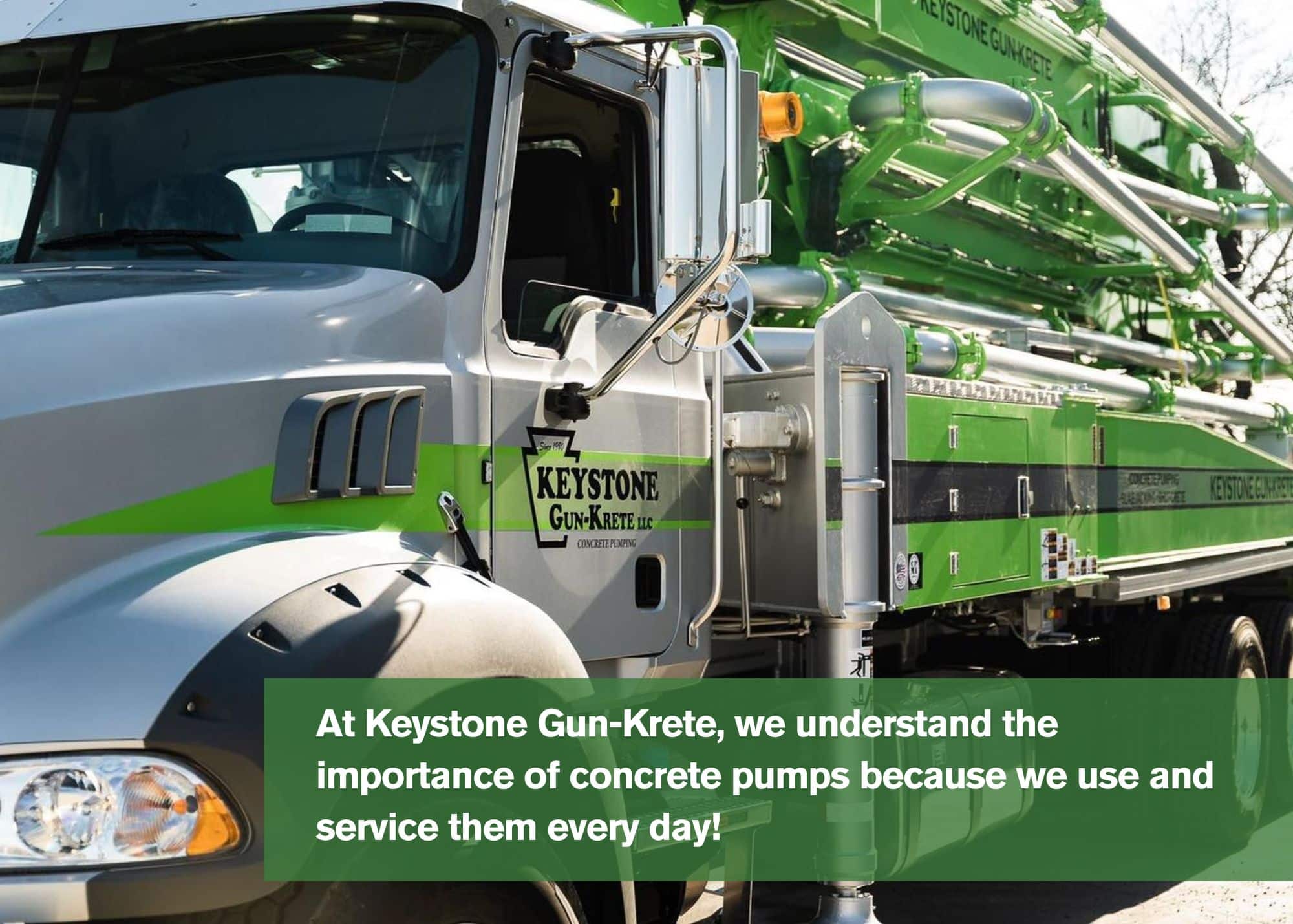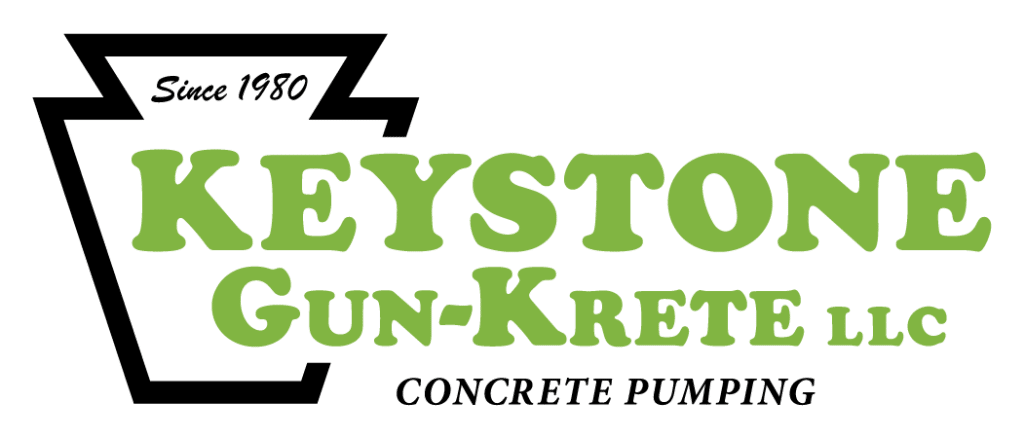The Essential Guide to Concrete Pumping: What You Need to Know
Concrete is a time-tested material that provides strength and durability to countless construction projects around the world. Yet, the challenge of efficiently placing this heavy, dense material often stands as a roadblock for many in the industry.
If you are a builder or concrete contractor, you know pouring concrete can be challenging depending on your site’s conditions, elevations and access for ready mix trucks.
At Keystone Gun-Krete, we understand this. Every contractor and construction professional deserves an efficient, streamlined process that doesn’t compromise quality. That’s why, in this comprehensive guide, we’ll unravel the intricacies of concrete pumping—breaking down the basics, types, benefits, and potential drawbacks. Our goal is to empower you with essential knowledge, helping ensure your projects run smoother and more efficiently. With years of experience, we can confidently guide you through the ins and outs of concrete pumping, shedding light on its benefits and limitations.
Understanding Concrete Pumping Basics
Let’s start from the ground up: what exactly is concrete pumping? At its core, concrete pumping is the process of transporting liquid concrete from the mixer to the designated area on a job site. This method leverages powerful hydraulic pumps to move the concrete through pipes or hoses, often tackling challenging terrains inaccessible by traditional methods, such as wheelbarrows, chutes, or conveyors.
Concrete pumping offers a faster, more precise method to ensure the concrete is placed effectively. It’s an industry standard for large-scale projects. But its benefits aren’t just for towering skyscrapers. Homeowners and small contractors also reap the benefits of this technology for smaller projects.
Concrete pumping ensures a continuous, fast, and uniform flow of concrete, which is crucial for many construction projects.

But it’s not only about speed; it’s about consistency and efficiency in getting the concrete where it needs to go. Concrete pumping is necessary because it significantly streamlines the process, eliminating the need for manual labor and wheelbarrows for many applications. Its widespread applications range from small residential projects, like pouring a new patio or foundation, to large-scale commercial developments, such as high-rise buildings or extensive roadwork.
Think of the time and effort saved—that’s the power of concrete pumping!
Since buying your own concrete pump isn’t practical, we provide this service for you and an experienced operator that will help your pour go smoothly. Contact Keystone Gun-Krete for concrete pumping service that will exceed your expectations.
Types of Concrete Pumps Explained
Before diving into the benefits and drawbacks, it’s crucial to understand the different types of concrete pumps available:
- Boom Pumps: These are equipped with a remote-controlled articulating arm (or ‘boom’) used to place concrete with high precision. The versatility of the boom allows for precise placement of concrete, minimizing waste and maximizing efficiency. Boom pumps are ideal for large-scale construction projects where concrete must be delivered to high or hard-to-reach areas.

This makes them perfect for high-rise buildings or structures where “wheeling it” with buggies or wheelbarrows is simply not an option. Boom pumps are also idea for pumping footers and walls on any size project to eliminate the need of dragging hoses around on the uneven jobsite.
2. Line Pumps: In contrast to boom pumps, line pumps are simpler using the same basic pumping technologies - just without a boom. They are often used for smaller construction projects where the concrete doesn’t need to be transported to elevated areas. Also known as trailer pumps or stationary pumps, line pumps employ flexible hoses or pipes laid out to the pour site. They are ideal for renovations, sidewalks, or projects where setting up a boom pump is impossible due to overhead wires or trees. For long distance pushes, the smaller pumps actually have higher pressures and can push concrete further making them useful when pumping concrete more than a couple of hundred feet. Their compact design also makes them easy to maneuver on smaller job sites.
Key Benefits of Using Concrete Pumps
You might be asking yourself, “Why should I consider using concrete pumps for my next project?” Good question!
Concrete pumping offers a multitude of advantages over traditional methods such using chutes and wheelbarrows to move concrete from the truck. Here are some of these:
- Increased Efficiency: Concrete pumps dramatically reduce delivery time compared to manual methods, significantly speeding up construction timelines.

- Access to Difficult Areas: Boom pumps can place concrete onto elevated decks, rooftops, or other elevated structures where space is limited or access might be challenging or even impossible without a boom. Trailer Pumps are often used to pump concrete into basements without outside access, crawl spaces, or other tight spaces saving incredible amounts of time and energy.
- Precision in Placement: Concrete pumps offer unmatched accuracy, ensuring the concrete is placed where needed, resulting in less waste and a more streamlined workflow.

- Reduced Labor Costs: By minimizing the need for manual labor, concrete pumping lowers labor costs, which translates to a more efficient use of your workforce.
- Enhanced Quality Control: By streamlining the placement process, pumps reduce the likelihood of quality issues related to improper handling.
- Reduced Risks: Since less laborers are needed on site for the manual labor, work comp risks are reduced for the contractor.
Potential Disadvantages of Using Concrete Pumps
While concrete pumping offers many benefits, like all technologies, it has its limitations. It’s essential to weigh these when deciding how to best allocate resources for a project:
- Potential for Blockages: If the ready mix concrete’s quality control isn’t up to par, blockages can occur in the pump lines from debris or mix inconsistencies. Working with Keystone Gun-Krete’s experienced operators can help mitigate these problems when bad mixes are on site. However, these blockages can cause delays in the placing process.
- Situational Limitations: Not every construction site is suitable for all types of concrete pumps. The site’s layout, accessibility, and the specific needs of the project must be carefully considered before choosing a pump.

- Specified Mix is Unpumpable: Many mixes today are simply not pumpable due to stone weights, lack of cement, too much fiber, or size of aggregate based on an engineer or end user’s specifications. In these situations where the mix is not able to be adjusted to make it pumpable, concrete pumps are simply not the answer.
Making the Right Choice for Your Project
Concrete pumping is not a one-size-fits-all solution. Knowing when to employ this method versus traditional methods is key. Start by evaluating your project’s specific needs. Consider factors like the scale of construction, accessibility of the pour area, budget considerations, and timeline constraints. These elements will guide you in deciding whether the benefits of concrete pumping outweigh the potential disadvantages.
If you decide concrete pumping fits your project, selecting the appropriate concrete pump depends on various factors. Consider the size and scope of your project. A boom pump is the likely choice for large-scale projects with high-rise structures. However, for smaller jobs, a line pump might suffice or might be required due to set up constraints. Assess the accessibility of the site. Are there any obstacles or tight spaces that might limit the maneuverability of a boom pump?
Planning ahead and considering all these factors will ensure you choose the best pump for your needs.
Conclusion
Well, there you have it! We’ve explored the basics of concrete pumping, the different types of pumps available, their benefits, potential drawbacks, and how to make the right choice for your project.
Concrete pumping presents advantages that can transform the logistics of construction projects, offering efficiency, precision, and reduced labor needs. By understanding the benefits and limitations, contractors can more effectively plan and execute their projects, ensuring new structures that endure the test of time.
Concrete pumps can be a formidable tool in the construction arsenal when used strategically. At Keystone Gun-Krete, we understand the importance of concrete pumps because we use and service them every day!

We also provide other services, such as concrete lifting, shotcrete services, and concrete pump sales and service.
Here are some other blogs we’ve written to help you understand all things concrete:
- Say Goodbye to Sinking Concrete: What You Need to Know About Concrete Lifting
- Your Concrete Lifting Questions Answered
- Concrete Lifting 101: A Guide to Restoring Your Concrete
- Keystone Gun-Krete Becomes a PA Costars Supplier for Concrete Lifting
You’re now equipped to make informed decisions for your concrete projects. For tailored advice on implementing concrete pumping in your upcoming projects or to explore more about specialized pumps for unique cases, we’re here to help.
Reach out to us today to discover how our expertise can support your next construction endeavor.






